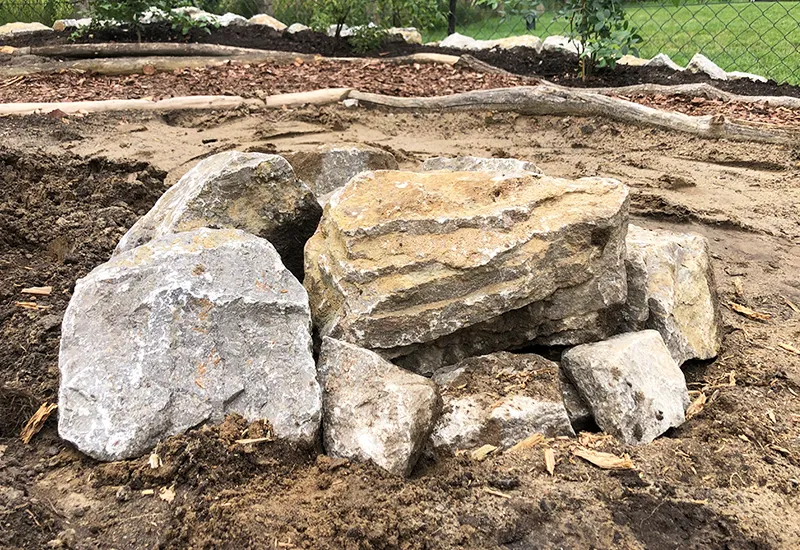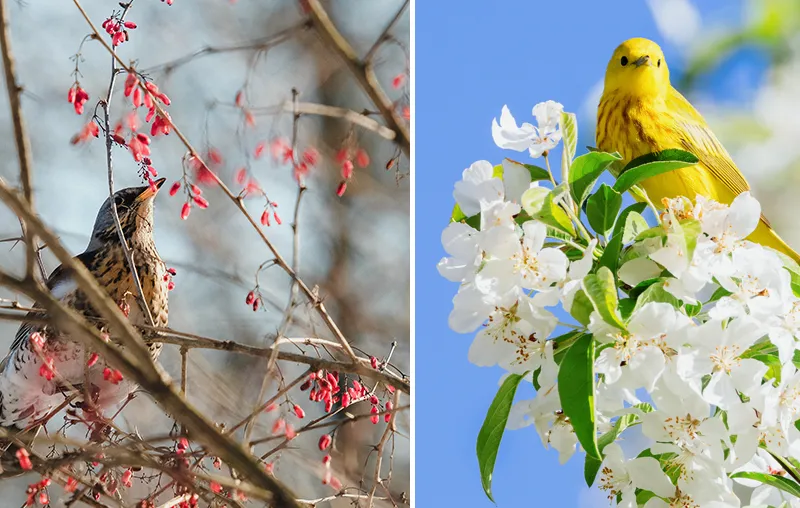Do you want to create a species-rich rock pile and help the animals in your garden? Then you've come to the right place! The global extinction of species is also due to the fact that many people are too organized, low-maintenance gardens without real structures.
But this is exactly what native animal species, such as wild bees or lizards, need for nesting sites, hiding places and other individual needs.
A simple pile of stones is a structure that provides an important habitat for numerous reptiles, insects and small mammals and is a natural eye-catcher in your home. Natural garden is.
In this article, I'll show you how to create a rock pile in your garden and what you need to bear in mind. You'll learn about the advantages, the material, the ideal location and the planting and get simple instructions on how to build one. Let's go!
Here you can find a short overview in advance:
Reasons: Why create a cairn in the garden?

Everyone should build a cairn! He makes every garden more beautiful, is easy to install and also in different variants realizable.
But that's not all. Carefully laid out piles of stones still have a few deeper, motivating advantagesthat I don't want to withhold from you.
With its cavities, cracks and the surface warmed by the sun, it provides, among other things Lizards, vipers, slow worms, toads, wild bees, beetles, butterfliesand many other insects as well as a variety of wild plants.
With the DIY project, you are therefore making a valuable Contribution to the domestic Biodiversity and help the global Counteracting species extinction.
Material: What do I need for a cairn?

You really don't need much for an optimal cairn. The most important materials are of course - drum roll please - Stones. 😉
But to get the maximum effect for the garden animals, you should also a few other things into your cairn project.
Here I have simply everything listedwhat you need:
- Various stonesWith many large (about 20-40 centimeters) but also some smaller natural stones, you can create a variety of hiding and nesting places. Give preference to stones from regional quarries or harvest stones from fields. Just ask the farmers in your area - also Classifieds are an ideal place to go!
- Crushed stone and gravelEspecially if you build the rock pile with a depression, the rainwater should always be able to drain away. A layer of crushed stone and gravel under the larger stones will help with this.
- SandIt is advisable to fill a little sand or garden soil into the cracks of your rock pile here and there. This will help to hold the stones in place and also create the basis for planting later on.
- PlantsWith drought-resistant and native plants, you also provide the animals that have settled here with a suitable food supply.
- WoodIntegrate some decomposable biomass, such as a few pieces of wood and branches, into your rock pile. This will attract a few more insect species.
A real biotope can be built in a short time with just these few "ingredients." 🙂
Location: Where is the ideal place for a pile of stones in the garden?
If you want to create a species-rich rock pile in the garden, you should place it in the right place. Above all, it must As sunny and sheltered from the wind as possible be
Therefore, align the cairn to the south if possible and accumulate the possible Excavation of a trough on its north side on. The sun warms the stones for many hours of the day - and the wind is also stopped by the pile of earth.
You should also be prepared for a Quiet, natural surroundings with some insect-friendly treesand a high grass or herb fringe (e.g. sown wildflowers). This means that the distances between food and shelter are always short.
Planting: How can you plant the rock pile?
Plants make the rock pile all the more attractive for insects and reptiles! But only if you make the right choice. To ensure that your efforts are appreciated by the animals, you should provide the following next to and on the rock pile native and drought-resistant plant species place. (this also applies to dry stone walls)
Here are a few recommended plantsthat round off your eco-friendly DIY project in a positive way:
- Spring cinquefoil (Potentilla verna)
- Common cat's paw (Antennaria dioica)
- Long-haired thyme (Thymus polytrichus)
- Common viper's bugloss (Echium vulgare)
- Silver thistle (Carlina acaulis)
- Mountain aster (Aster amellus)
- Lesser hawkweed (Hieracium pilosella)
Do you have any other Ideas or recommendations? Then write me a comment!
Work steps: How exactly can I create a species-rich cairn?

Every garden offers different possibilities. Accordingly, you should also design your cairn individually and Design to suit the circumstances. For example, with or without a trough - large or small.
The illustration shows two suggestions to give you a feel for this, What is important for a species-friendly cairn.
At this point I would like to give you a Short step-by-step instructions that you can go through after finding the location:
- Prepare location (Loosen the soil and remove weeds; dig a hollow if necessary)
- Create a basis (lay gravel or crushed stone on the prepared surface)
- Layer stones (The largest stones first and small stones in between)
- Integrate deadwood (Simply place between the stones)
- Add sand and soil (Fill some spaces with sand and soil)
- Insert plants (Make sure they have enough soil available)
- Watering (Water the plants and monitor them regularly at the beginning)
From this moment on, you can watch the goings-on at the cairn enjoy and observeas the garden animals accept it. Basically, it doesn't need any care either. If necessary, you can make a few adjustments from time to time.
Additional Tip: Above all, insects need access to drinking water. How you can easily create a Building a bee drinking trough I will be happy to show you in another blog article.
Create rock piles and help wild bees, lizards and other garden animals

A pile of stones. As inconspicuous as it may be in nature or in a private garden, life rages within him. It is a living biotope that provides shelter and food for reptiles, insects and other animals and is incredibly easy to build.
With a simple combination of stones, some old wood and the right plants, you can make your wild corner in garden expand with a new sight and enjoy the life of the inhabitants of the cairn from the hammock.
"Anything that is against nature will not last in the long run."
Charles Darwin (more at Species protection quotes)
I hope that this article will inspire you to take action and make your own Making the garden more sustainable. Do you have any questions or your own experiences that you would like to share? Then I look forward to your comment!
Stay close to nature and creative,

PS: Fancy more DIY ideas for your natural garden? Then take a look at my Instructions for the beetle cellar. You can also make a wonderful contribution to the protection of native species. Good luck with the implementation!






